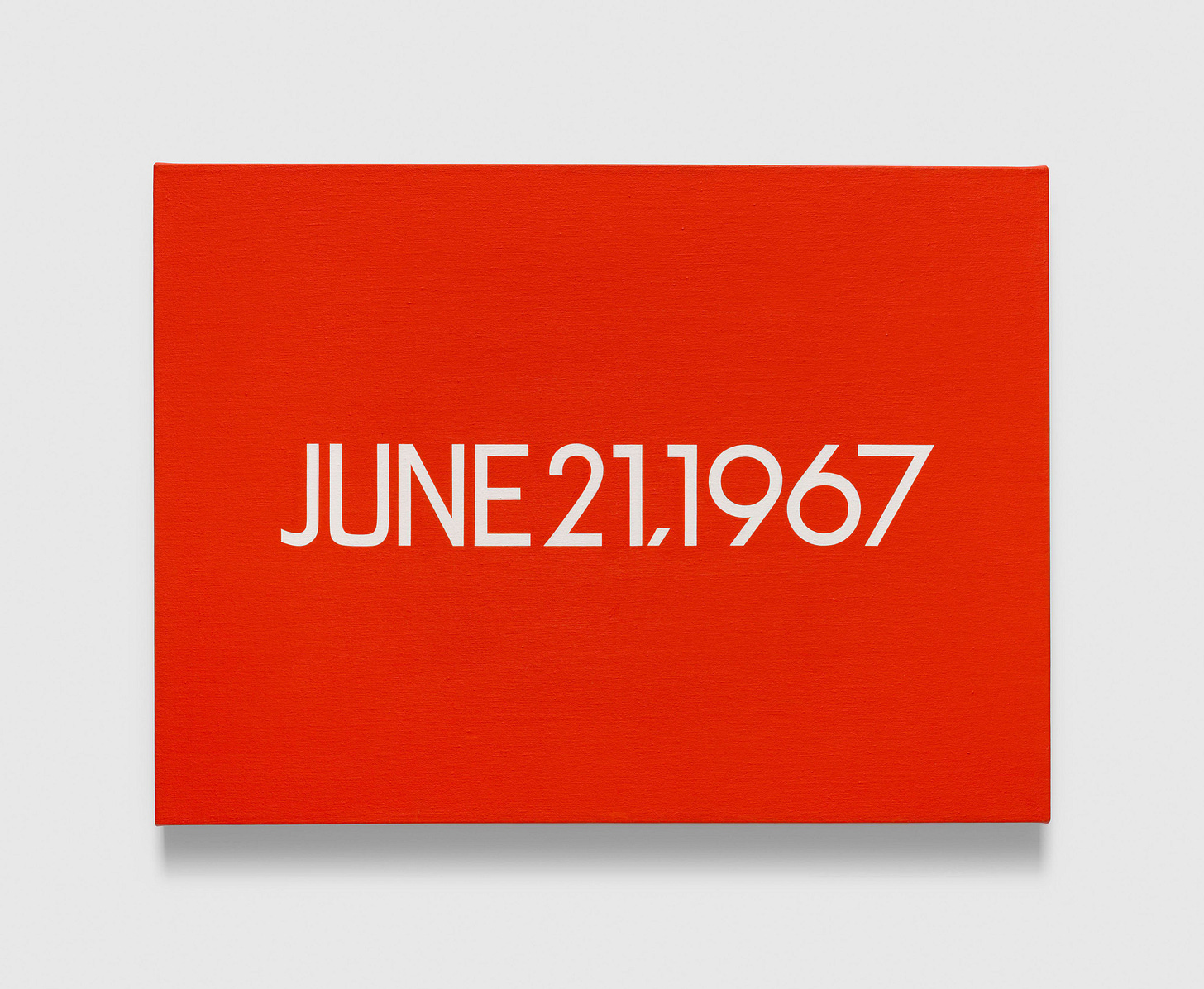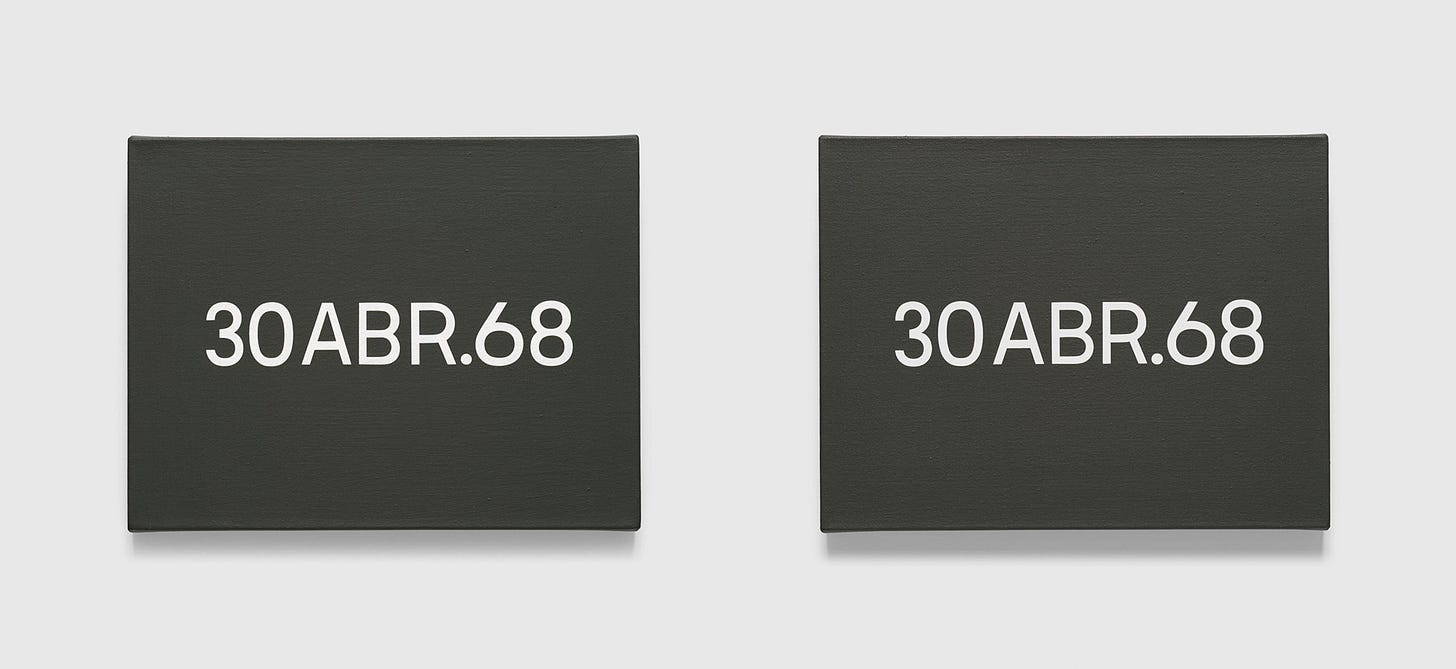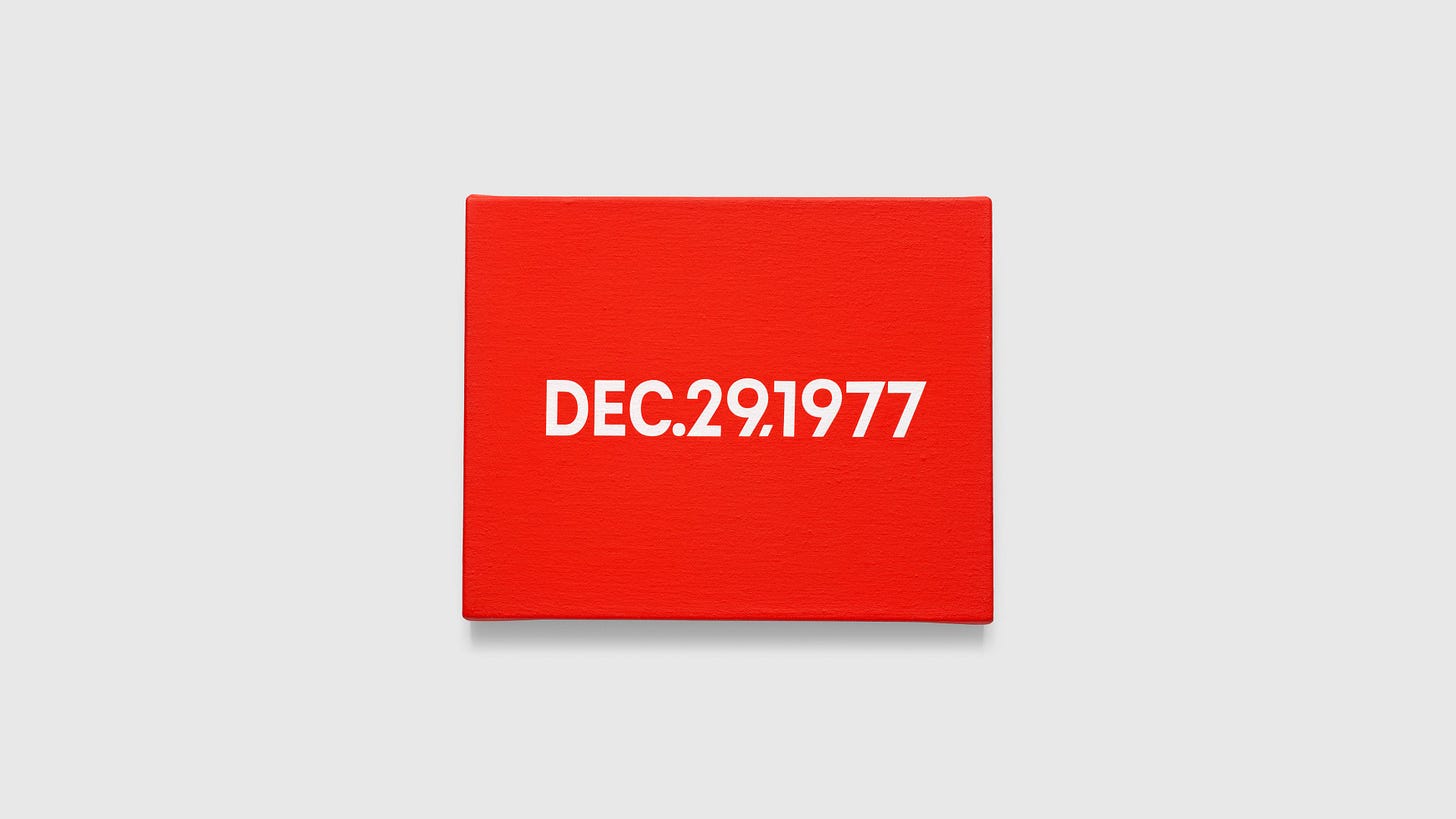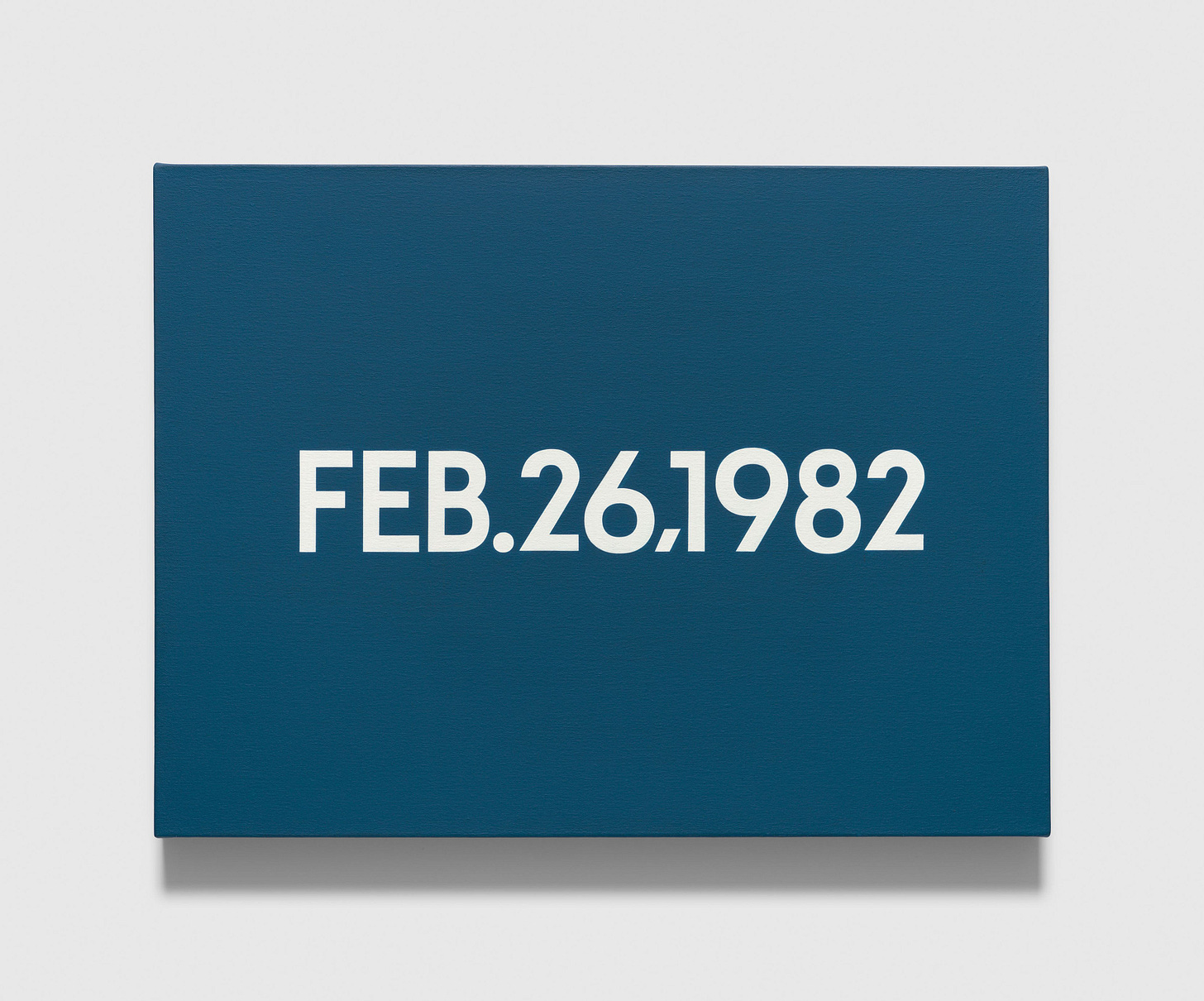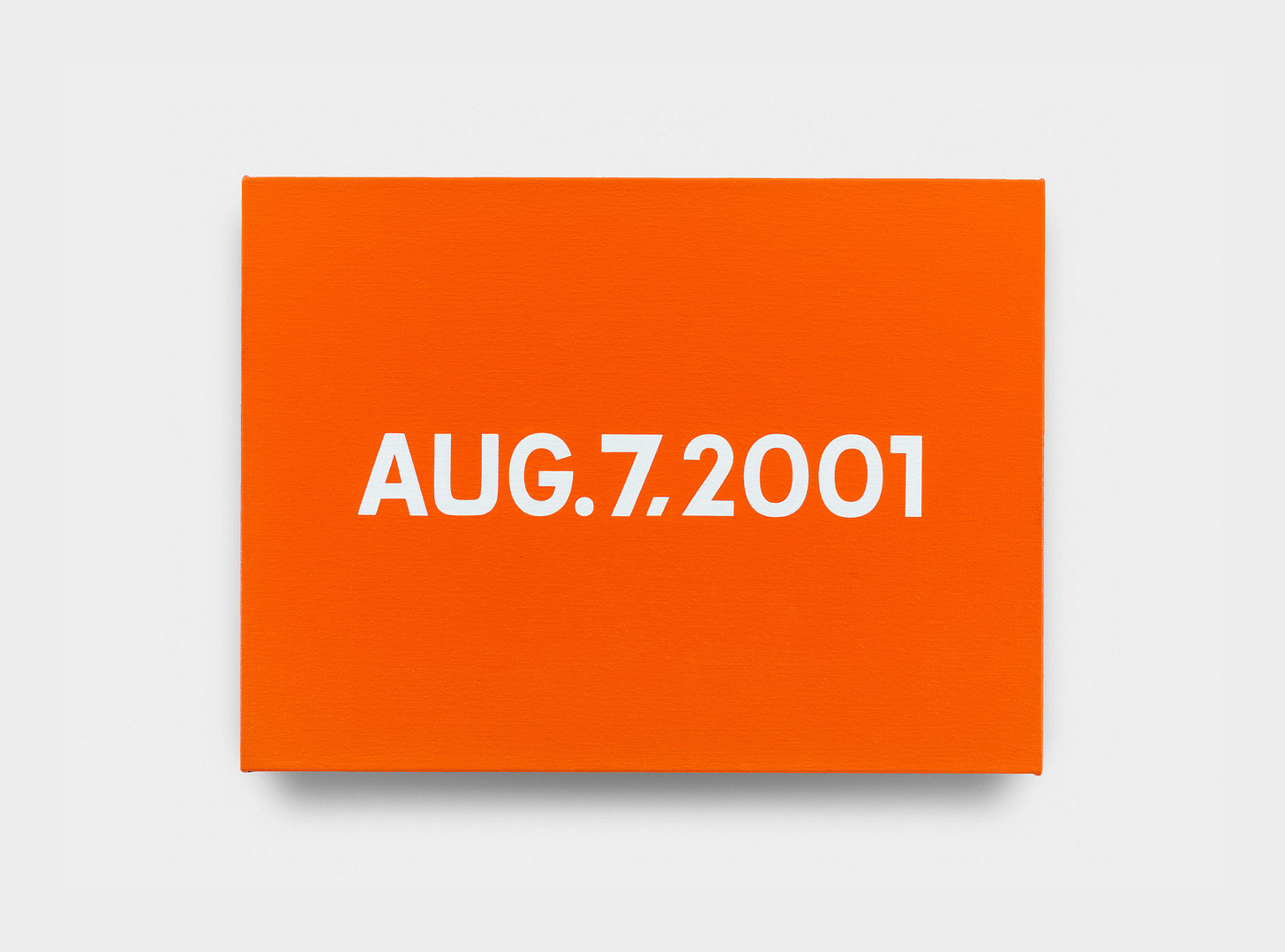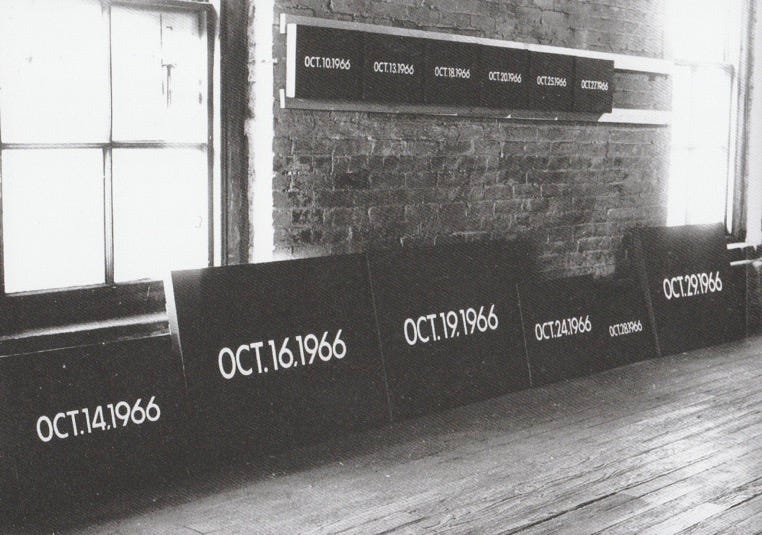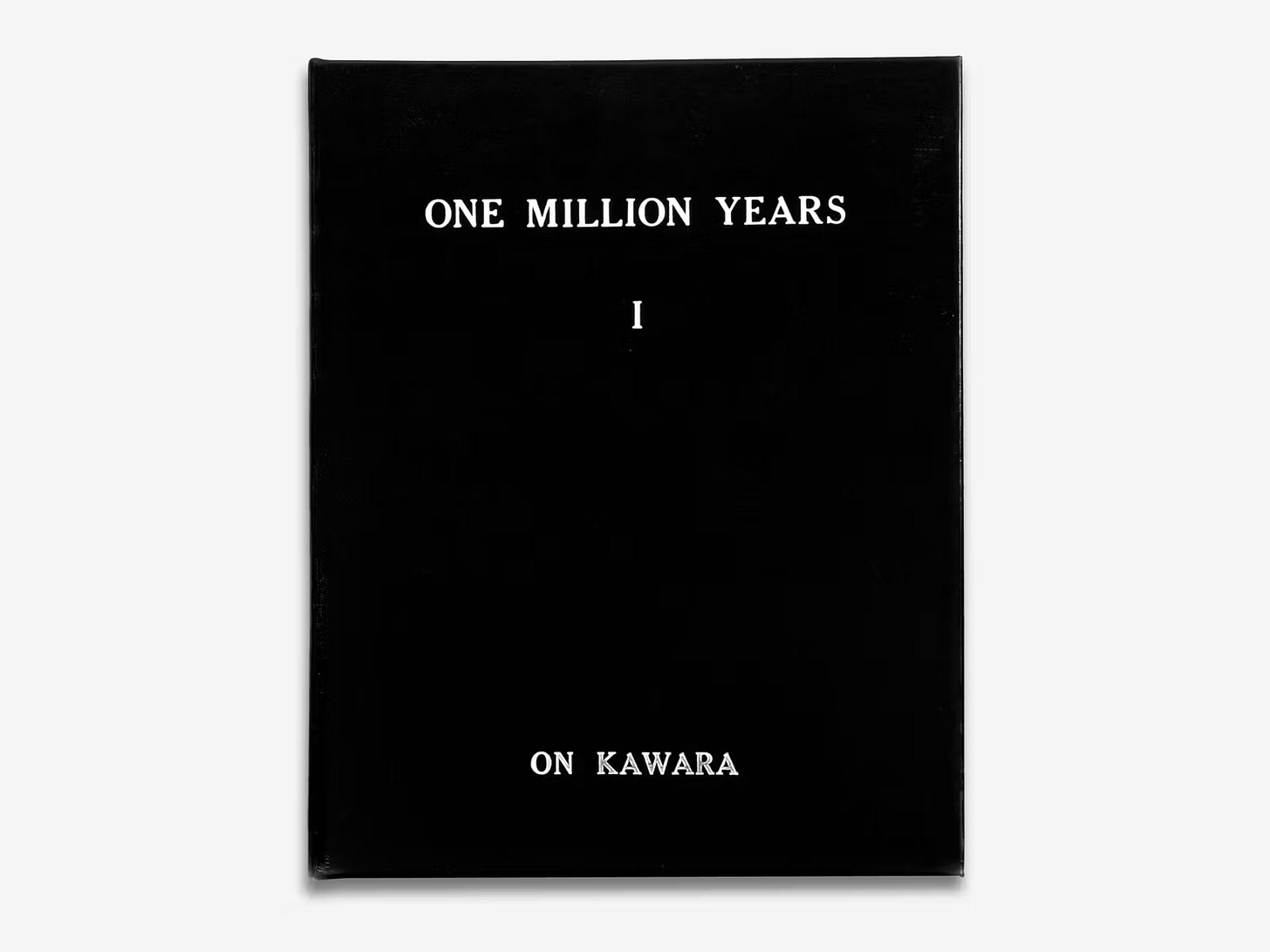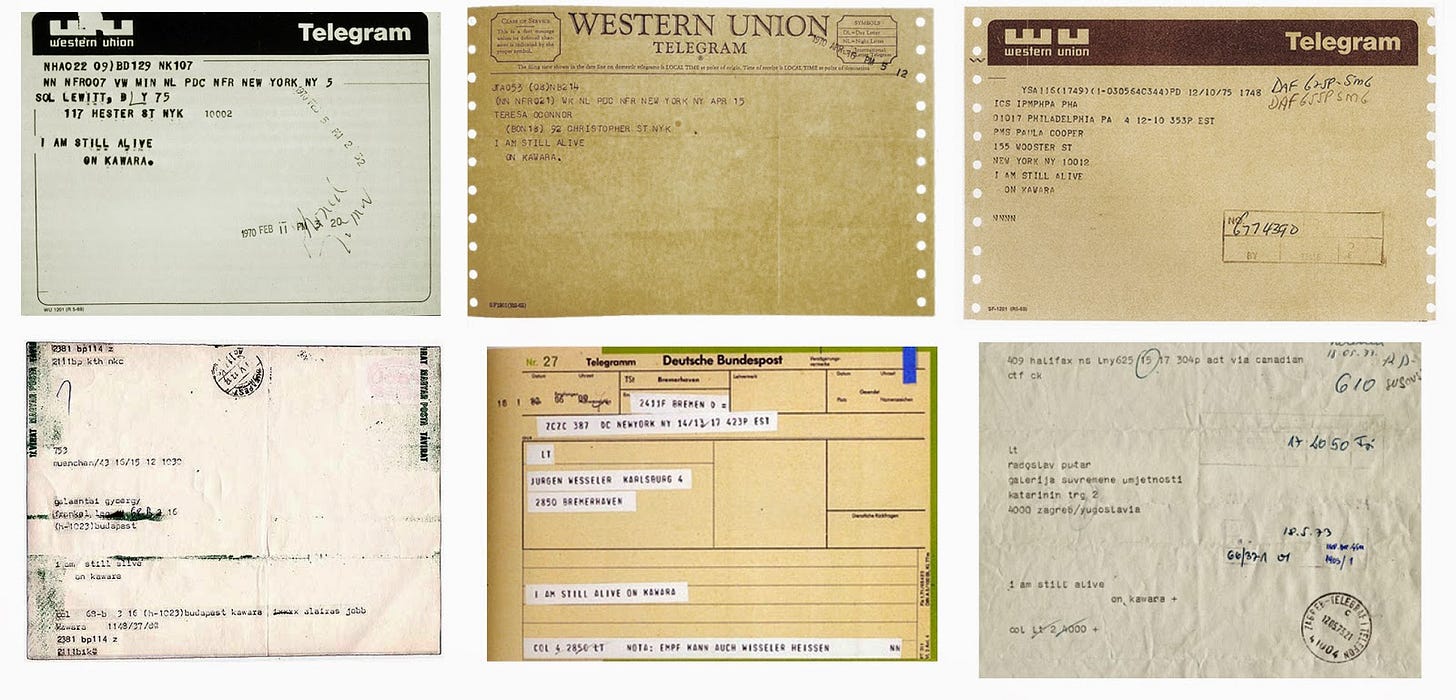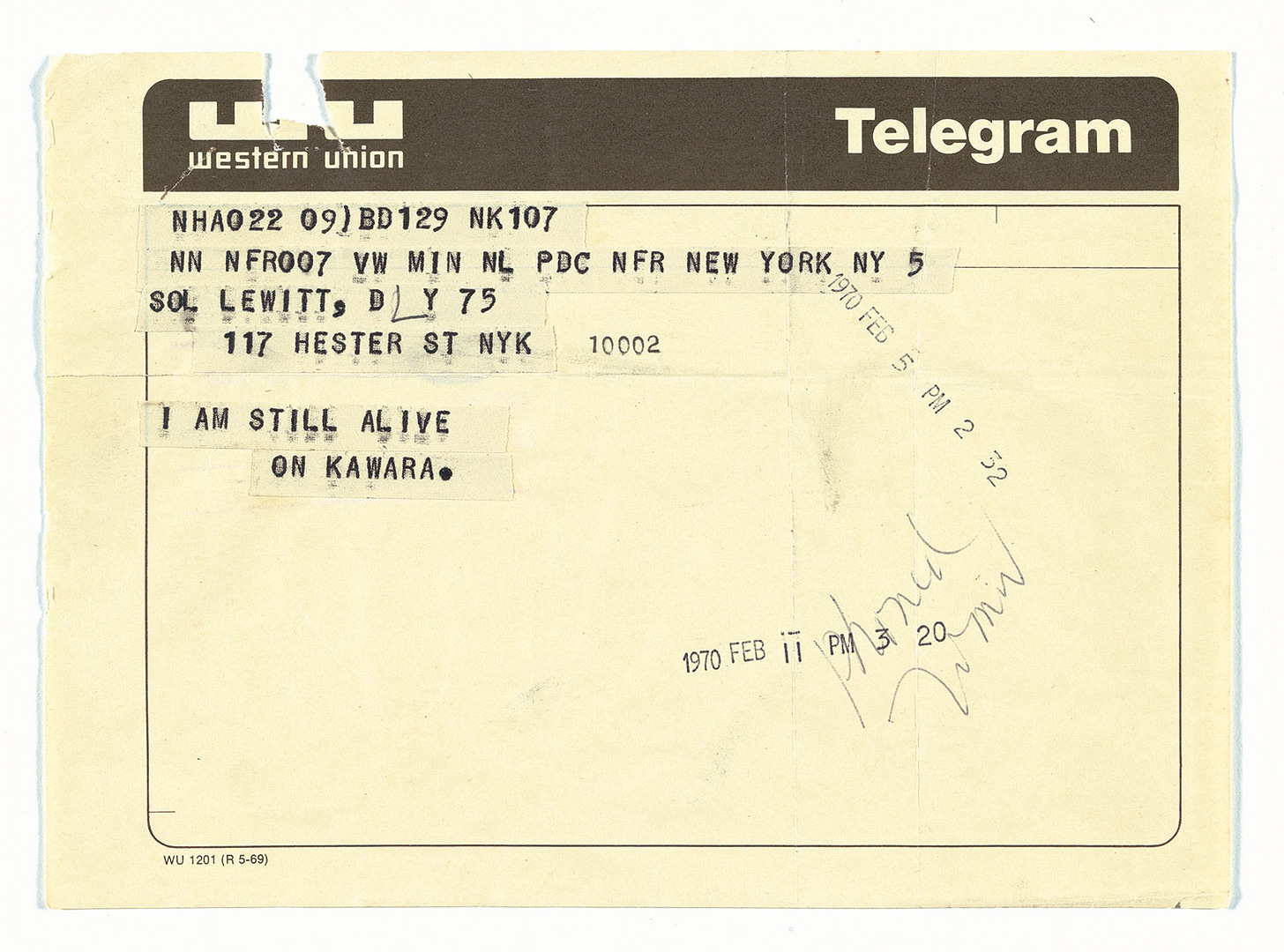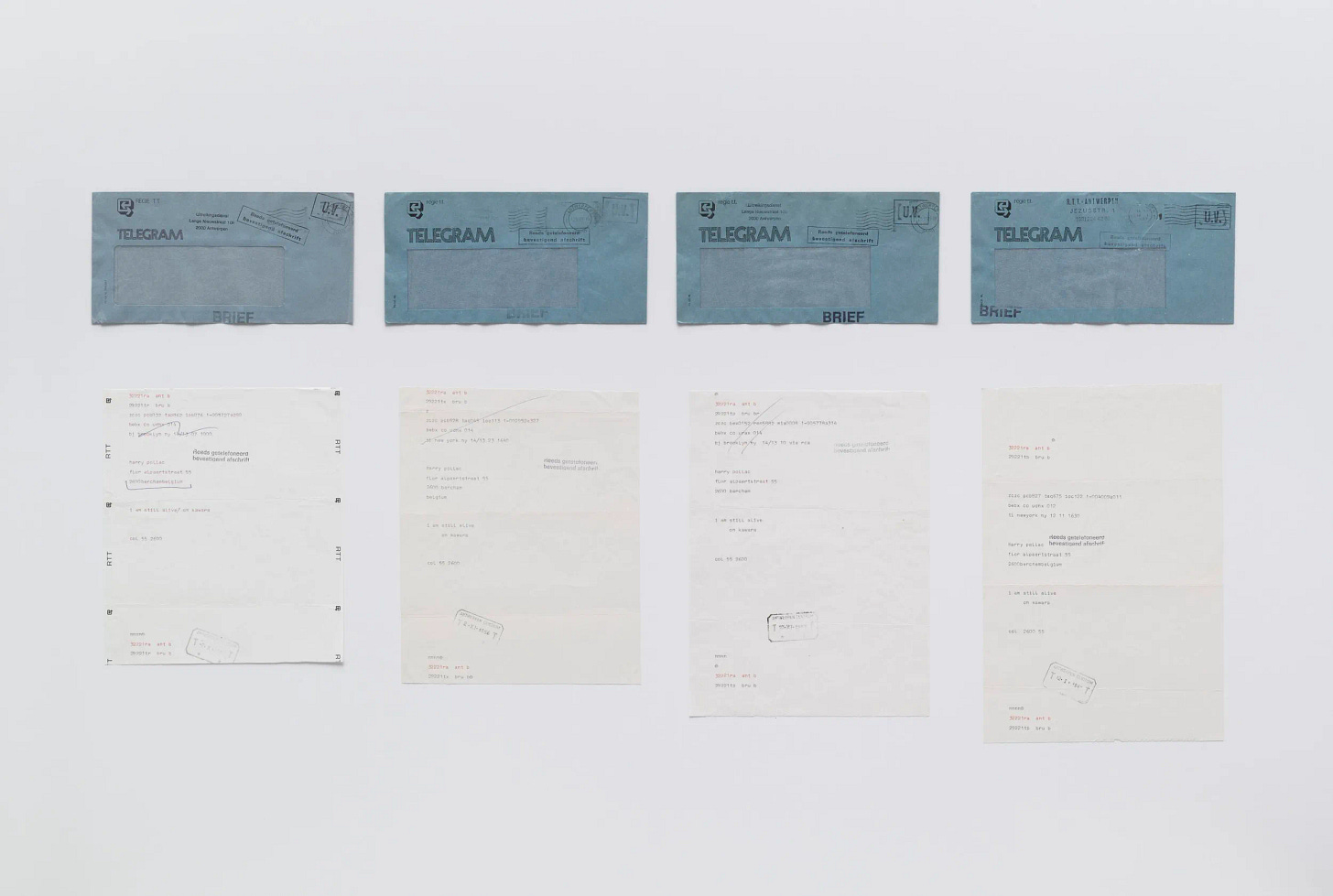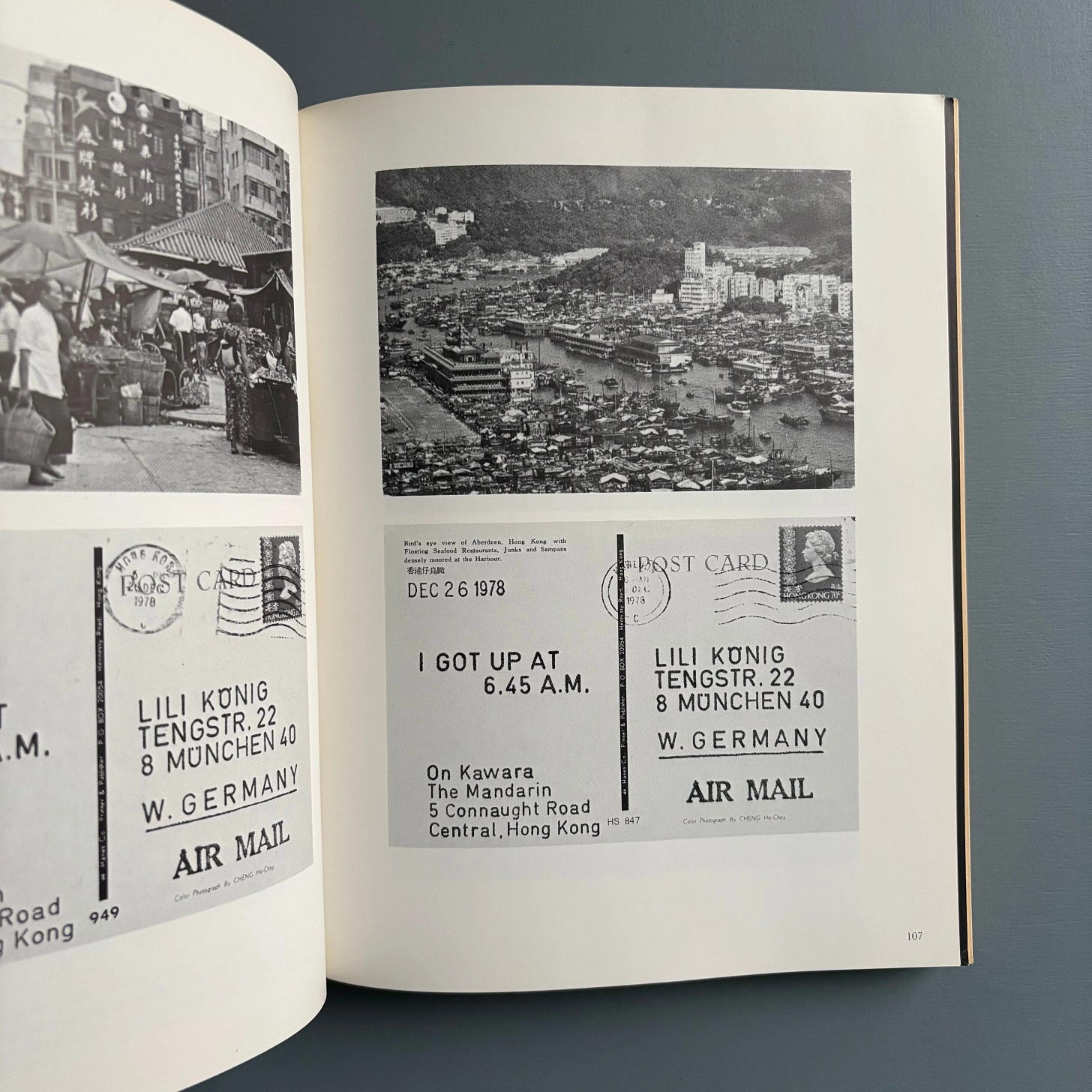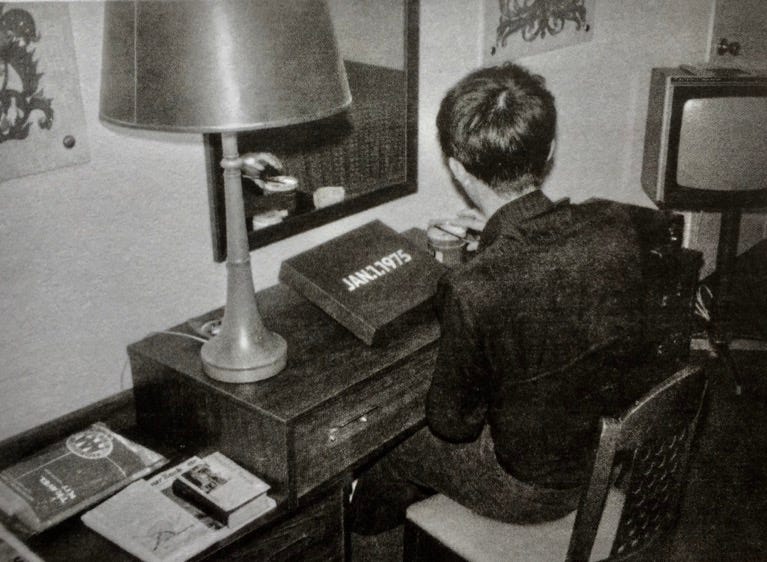On Kawara | Part 1
Today, 1966-2013 | I Got Up, 1968-1979 | One Million Years, 1969-1998 | I Am Still Alive, 1970-2000 | One Hundred Years Calendars, 1984-2012
AS I WAS MOVING AHEAD OCCASIONALLY I SAW BRIEF GLIMPSES OF BEAUTY is a very simple newsletter where I share a collection of creative expressions I enjoyed coming across.
Over more than five decades, On Kawara (29,771 days) developed a distinct and highly nuanced form of artistic expression that engaged with chronological time and its function as a measure of human existence. A key figure in the conceptual art movement that emerged in New York in the 1960s, the artist created a significant body of work organized into discrete series that together form a meditative examination of time and place. At once specific and universal, rigorous and expansive, Kawara’s work encompasses the simultaneous mundanity and vastness of lived experience.
David Zwirner
Today, 1966-2013
On January 4, 1966, On Kawara began his Today series, or Date Paintings. He worked on the series for nearly five decades. A Date Painting is a monochromatic canvas of red, blue, or gray with the date on which it was made inscribed in white. Date Paintings range in size from 8 x 10 inches to 61 x 89 inches. The date is composed in the language and convention of the place where Kawara made the painting. […] He did not create a painting every day, but some days he made two, even three. The paintings were produced meticulously over the course of many hours according to a series of steps that never varied. If a painting was not finished by midnight, he destroyed it.
Jeffrey Weiss
The paintings are placeholders for the passage of time, and in this way they function as souvenirs. They are reminders of the banality of our existence.
Alejandro Cesarco
In the Today series, and in spite of its efforts to articulate difference through counting, every day – even tomorrow, even yesterday – is today.
Alejandro Cesarco
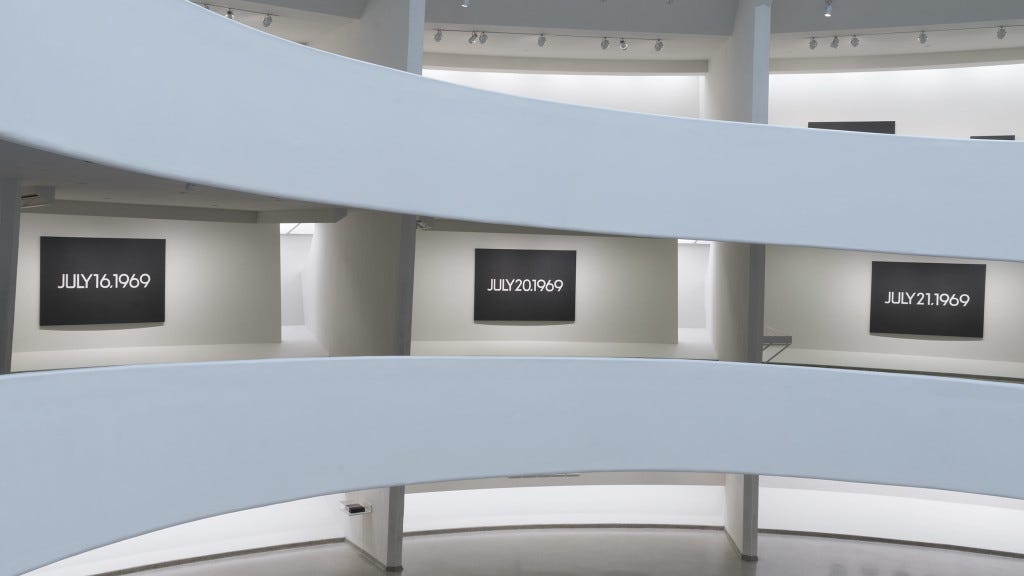

I Got Up, 1968-1979
“I Got Up” is part of a continuous piece produced by On Kawara between 1968 and 1979 in which each day the artist sent two different friends or colleagues a picture postcard, each stamped with the exact time he arose that day and the addresses of both sender and recipient.
The Metropolitan Museum of Art

One Million Years, 1969-1998
One Million Years is a monumental 20-volume collection, comprised of One Million Years [Past], created in 1969 and containing the years 998,031 B.C. through 1969 A.D., and One Million Years [Future], created in 1981 and containing the years 1996 A.D. to 1,001,995 A.D. Together these volumes make up 2,000,000 years. The subtitle for One Million Years [Past] is "For all those who have lived and died." The subtitle for One Million Years [Future] is "For the last one." Documenting the passage of chronological time, each leather hardbound volume contains 2,068 photocopied pages. The size of each volume is 12 ¼ x 10 x 3 ¼ inches and weighs 8 lbs. 12 editions of [Past] were produced from 1970 to 1971, and 12 editions of [Future] from 1981 to 1998.
David Zwirner
I Am Still Alive, 1970-2000
The “I Am Still Alive” series of telegrams sent by On Kawara started with the following three messages: “I AM NOT GOING TO COMMIT SUICIDE DON’T WORRY”; “I AM NOT GOING TO COMMIT SUICIDE WORRY”; “I AM GOING TO SLEEP FORGET IT”. From then on, Kawara intermittently sent out telegrams that read “I AM STILL ALIVE”.
This material reduction, onto which his subjectivity is folded, suggests physical and temporal apartness which in turn puts into question the reliability and accuracy of the message. Because of this – and given the statements that initiated the series – “I Am Still Alive” is also and primarily about its opposite and complement: I am not still alive.
This in actuality is the common usage of the telegram: the communication of extraordinary events such as death, birth, war and peace. I'm Still Alive, in fact, suggests the unavoidable imminence of death. They are out-of-the-blue reminders of our own and his own mortality.
Alejandro Cesarco
One Hundred Years Calendars, 1984-2012
The format of the calendar provided On Kawara with another way of representing time and recording daily life. [...] For One Hundred Years Calendars, the calendars are ten rows high, with each row representing a decade and columns representing the months. Black dots indicate Sundays. Every day in the artist’s life is marked over the numeral with a yellow dot. Every day a Date Painting was completed is marked with a green dot, and red dots note when more than one painting was made.
Jeffrey Weiss and Anne Wheeler




